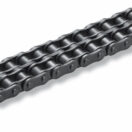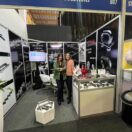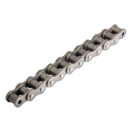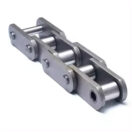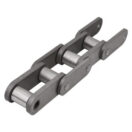What are the different types of conveyor chains?
Conveyor chains are used in various functions as an indispensable element of industry. Basically, they are designed to move materials from one point to another, but there are a number of special designs for different applications. They range from standard chains to heavy-duty chains that require high durability, corrosion-resistant chains made from stainless steel and temperature-resistant chains designed for use at high temperatures. For example, round link chains are preferred in areas that require heavy load transportation, such as mining, while modular chains are ideal for the food industry and light product transportation. In addition, special design conveyor chains can be customized to meet the unique needs of different industries. This diversity ensures that conveyor chains find a wide range of uses in industries ranging from automotive to food processing to mining.
How to maintain the conveyor chain system?
Conveyor chain systems play an important role in production lines, storage areas and material handling operations. Regular and effective maintenance of these systems is critical to increase operational efficiency and prevent unexpected breakdowns. Here are tips on conveyor chain maintenance:
The conveyor chain system must be checked regularly.
- The chains, chain wheels and carriers should be visually inspected every day before the system is started. Look for abnormal noises, loose fasteners or signs of excessive wear.
- During monthly inspections, chain tension, alignment and wear are examined in more detail. The chains and chain wheels are checked for correct alignment.
The conveyor chain system must be cleaned regularly.
- Conveyor chains and related components must be cleaned regularly. Dirt, dust and other foreign matter can reduce system performance. Suitable cleaners must be used for cleaning.
- Proper lubrication of the chain reduces wear and extends its life. Lubrication should be carried out in accordance with the manufacturer’s recommended lubrication program and oil type.
The conveyor chain system should undergo a regular wear and tear inspection.
- Chain wear causes an increase in chain length. An increase in a certain length indicates that the chain needs to be replaced.
- The chain wheels should also be checked regularly for wear. Worn wheels prevent the chain from working properly and lead to premature wear.
The chain must not be too loose or too tight. Proper tension ensures proper system operation and prevents excessive wear.
Correct alignment of the chain and chain wheels reduces wear and increases efficiency.
Maintenance of the conveyor chain system is vital to ensure long-term and efficient operation of the system. Regular maintenance helps businesses save time and costs by preventing premature wear and breakdowns.
Can conveyor chains be customized for specific applications?
Makelsan chain is an indispensable part of industrial production and material handling processes. The flexibility and efficiency of these systems can be enhanced with chain solutions that can be customized according to different application requirements. Customized conveyor chains can be designed and manufactured to meet the unique needs of specific industrial applications.
Customized conveyor chains can improve operational efficiency by better adapting to the requirements of industrial processes. Many customization options are available, from material selection and design to surface treatments and additional add-ons. These customizations can improve system performance, reduce maintenance costs and optimize production processes. Customized conveyor chain solutions play a critical role to meet the unique needs of industrial applications. Knowledge of conveyor chain features and chain systems will help you decide which chain to choose and how to customize it.
What should be considered when installing a conveyor chain system?
Conveyor chain system installation is an important process that directly affects the efficiency and functioning of industrial production lines. Therefore, there are several critical points to consider during the installation phase. First, the system needs to be designed correctly, which is determined by factors such as the size, weight and speed of transportation of materials. Furthermore, accurately measuring the area where the conveyor will be installed and designing the system accordingly is essential for optimum performance.
During installation, the quality and correct assembly of the conveyor components are also of great importance. The use of high quality materials ensures that the system is long-lasting and does not require frequent maintenance. Carrying out the installation process in accordance with the manufacturer’s instructions and industry standards increases system safety and prevents potential failures. In this context, utilizing professional installation teams and ensuring that all necessary safety tests are carried out is critical to the success of the installation process.
Finally, regular maintenance and checks of the conveyor chain system are an integral part of the post-installation process. Once the installation is complete, extensive testing should be carried out to ensure that the system is functioning properly. Establishing regular maintenance schedules contributes to maintaining system efficiency and cost savings in the long run. In this process, proactive measures should be taken to look out for possible signs of wear and tear and respond quickly when necessary. The success of an industrial chains installation is directly related not only to correct application and quality materials, but also to continuous maintenance and monitoring.
What are the key points to consider when installing a conveyor chain system?
Conveyor chain system installation plays a critical role in production and material handling processes. Therefore, a comprehensive planning and design process should be carried out prior to installation. A design should be made taking into account various factors such as the characteristics of the material to be conveyed, system capacity, speed and the physical conditions of the installation site. This stage forms the basis for system efficiency and operational effectiveness and is an important step in preventing potential problems.
The components of the system must be selected from high quality materials. Conveyor chains, sprockets, rollers and other elements should be manufactured from materials with properties such as wear resistance, corrosion resistance and long life. This selection increases the reliability and durability of the system, while reducing the need for maintenance and operating costs. The selection of quality materials saves time and cost for the enterprises by maintaining the performance of the system in the long term.
Tips for choosing the right conveyor chain
Choosing the right conveyor chain has a major impact on the efficiency, reliability and lifetime of the system. When making the choice, factors such as the type, weight and size of the material to be transported are important, as these factors directly affect the material structure and size of the chain. In addition, the conditions of the working environment (such as temperature, humidity, chemical exposure) and the desired speed and capacity should also be considered. Chains made of high quality and wear-resistant materials should be preferred, so that maintenance and replacement costs can be reduced. For customized needs, it should be assessed whether additional attachments or special surface treatments are required. Purchasing from a reliable supplier is key to improving system reliability and performance in the long term.
Finally, the benefits of using conveyor chains can be listed as follows:
The use of conveyor chains significantly increases efficiency and operational effectiveness in production lines and material handling systems.
By ensuring fast and safe transportation of materials, it contributes to the continuous and orderly progress of business processes.
Conveyor chains require less labor compared to manual handling processes, which reduces costs for businesses and increases occupational safety.
With flexible installation options, they can be easily integrated in different areas and in various applications, making them a versatile and economical solution.


